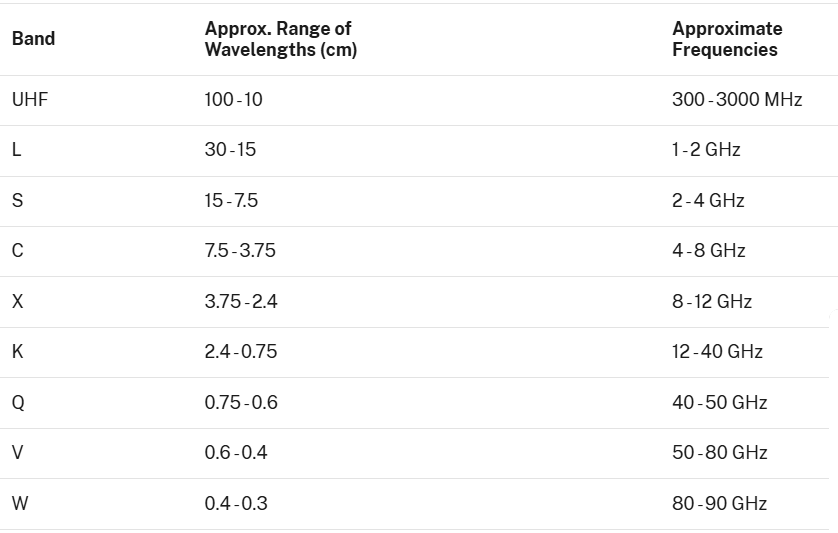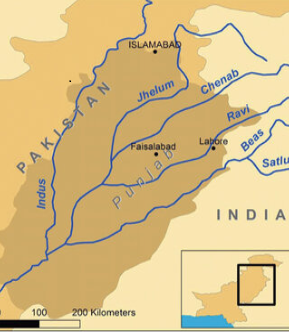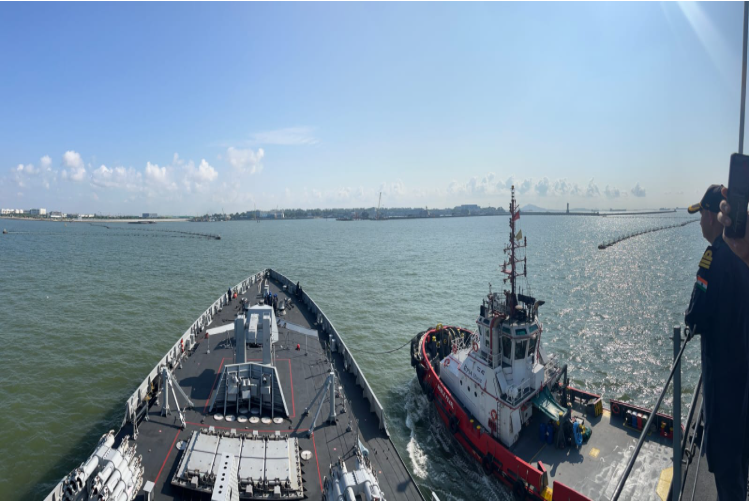Ethics
Ethical Digital Conduct in Public Service
For Prelims: RTI Act, 2005, Official Secrets Act,1923, Freedom of Expression
For Mains: Key Pillars of Ethical Digital Conduct in Public Service, Arguments in Favour and Against Regulation of Civil Servants’ Social Media Usage.
Source: TOI,
Why in News?
The Maharashtra government’s recent directive on regulating social media use by government employees, focusing on political neutrality and information confidentiality, has reignited the larger debate on ethical digital conduct in public service.
- In a parallel development, LBSNAA’s April 2025 advisory to newly selected civil servants highlights the same concern, urging officers to exercise caution and avoid impulsive online behaviour or accepting inducements.
- It further emphasizes the importance of maintaining integrity and exercising restraint in the digital realm.
What are the Key Pillars of Ethical Digital Conduct in Public Service?
- Transparency: Public servants must foster openness by ensuring all digital communications and decisions are clear, accessible, and comprehensible to the public.
- This builds trust by making government actions visible and accountable to citizens.
- Accountability: Civil servants should be responsible for their digital actions, both professionally and personally, ensuring that their online behavior aligns with public expectations and institutional standards.
- This includes answering for any online missteps and maintaining ethical integrity.
- Impartiality: Public servants must avoid any appearance of bias in their digital interactions.
- This entails ensuring political neutrality on social media and refraining from posting content that could be seen as influencing public opinion unfairly or violating the duty of impartiality required in governance.
- Integrity: Public servants should act with honesty, consistency, and fairness in all their digital engagements.
- They must avoid engaging in deceptive behavior online, which could undermine trust in public institutions.
Note: In recent times, there has been a noticeable increase in the use of digital platforms, particularly social media, by civil servants for personal visibility and expression that has raised concerns.
- While digital platforms enable outreach and transparency, their misuse can affect neutrality, integrity, and public trust in the service and thus necessitates regulation.
How far is Regulation of Civil Servants’ Social Media Usage Justified?
- In Favor of Regulation:
- Preserving Political Neutrality: Expressing political opinions or endorsing ideologies compromises the apolitical character of the civil service.
- The regulation aligns with deontological ethics, which emphasizes duty over personal opinion, and Rawls' theory of justice, advocating fairness for all citizens, regardless of their political or personal beliefs.
- This ensures that decisions are made impartially and without partisan bias, focusing on universal principles of justice rather than individual preferences.
- The regulation aligns with deontological ethics, which emphasizes duty over personal opinion, and Rawls' theory of justice, advocating fairness for all citizens, regardless of their political or personal beliefs.
- Protection of Sensitive Information: Civil servants’ social media activity could lead to unintended leaks or misinformation, compromising national security.
- Regulation helps maintain confidentiality and protect public trust, grounded in Kantian duty ethics, where a breach of duty is wrong regardless of intent.
- Maintaining Institutional Integrity: Civil servants, especially in uniformed services, represent the state’s image.
- For instance, Somnath Zende, a police sub-inspector in Pune, was suspended for violating the police conduct rules after winning money through an online fantasy league.
- Unprofessional behavior online can harm the institution’s reputation, and regulation aligns with virtue ethics, which values dignity, propriety, and restraint in public life.
- Public Interest First Principle: As per the Gandhian principle of selfless service, civil servants must prioritize the public good over personal expression.
- Utilitarian ethics supports regulation, arguing the greater public interest should outweigh individual freedom when necessary.
- Preserving Political Neutrality: Expressing political opinions or endorsing ideologies compromises the apolitical character of the civil service.
- Against Overregulation:
- Violation of Freedom of Expression: Over-regulation risks violating fundamental freedom under Article 19(1)(a) of Indian constitution.
- John Stuart Mill’s liberty principle suggests personal freedoms should only be restricted when harm is clearly demonstrated.
- Erosion of Transparency: Social media can serve as a tool for transparency, enabling civil servants to share government insights and updates directly.
- Over-regulation could limit this, undermining public access to information.
- Also, the presence of civil servants on social media has led to increased public scrutiny of their backgrounds, assets, and recruitment-related documents (e.g., Pooja Khedkar Case), offering an open platform for citizens to engage with and assess the integrity of public officials.
- However, over-regulating their online activities could curtail this transparent interaction, ultimately reducing the level of accountability.
- Generational Disconnect: Younger civil servants are more familiar with social media dynamics.
- Over-regulation risks distancing the government from the tech-savvy, younger population, clashing with the ethical principles of empathy and inclusivity.
- Morale and Trust: Excessive restrictions can breed distrust and alienation among civil servants, affecting morale.
- A balance is needed to avoid creating an atmosphere of suspicion, violating organizational justice and trust, both crucial for a healthy institutional culture.
- Violation of Freedom of Expression: Over-regulation risks violating fundamental freedom under Article 19(1)(a) of Indian constitution.
What is the Existing Regulatory Mechanism for Civil Servants in India?
|
Framework/Rule |
Key Provisions |
|
Prohibits criticism of government policy and requires political neutrality. |
|
|
Mandates dignified conduct and prohibits disclosure of information. |
|
|
Protect sensitive and classified information from being leaked. |
What Measures can be Adopted to Promote Ethical Digital Conduct in Civil Servants with Regulatory Balance?
- Frame Clear and Specific Guidelines: Rules must clearly define acceptable and unacceptable online behaviour, distinguishing personal views from official responsibilities.
- This prevents ambiguity while safeguarding the dignity of the service.
- Promote Constructive Use of Social Media: Encourage the use of platforms for public awareness, grievance redressal, and policy outreach.
- Recognising ethical use can inspire a culture of responsible innovation within the bureaucracy.
- For instance, during the 2018 Kerala floods, IAS officer Prasanth Nair ("Collector Bro") effectively used social media to mobilize tech volunteers and coordinate rescue efforts.
- Recognising ethical use can inspire a culture of responsible innovation within the bureaucracy.
- Integrate Digital Ethics in Training: Civil servants along with all government employees should undergo training in digital conduct, data privacy, and ethical communication.
- This fosters self-awareness and aligns actions with constitutional and ethical responsibilities.
- Department-Specific Protocols: Each ministry or state department can create its own social media policy tailored to operational needs.
- This decentralised approach ensures context-sensitive regulation.
- Implement a Graded Accountability Mechanism: Instead of harsh blanket punishment, a proportionate response system — from advisory warnings to formal action — maintains discipline without demoralising officers.
- Reinforce Virtue-Based Self-Regulation: Encourage officers to follow virtue ethics — restraint, humility, and integrity — as guiding principles. A culture of self-discipline is more effective than overregulation.
Conclusion:
As civil servants navigate the digital age, the key lies in balancing freedom with responsibility, and expression with ethics. Regulation should not stifle innovation or outreach but ensure that conduct remains anchored in neutrality, integrity, and public trust. As the LBSNAA motto wisely reminds us, “Sheelam Param Bhushanam” i.e, Character is the supreme ornament and this character must shine through both offline and online.
|
Drishti Mains Question: In an increasingly digital world, the ethical conduct of public servants on social media and other digital platforms is under constant scrutiny. Discuss the importance of digital ethics in public service. Suggest measures to ensure a balance between freedom of expression and institutional responsibility. |
UPSC Civil Services Previous Year Questions:
Mains
Q. "The 'Code of Conduct' and 'Code of Ethics' are the sources of guidance in public administration. There is a code of conduct already in operation, whereas a code of ethics is not yet put in place. Suggest a suitable model for code of ethics to maintain integrity, probity and transparency in governance. (2024)
Biodiversity & Environment
Depleting Coral Cover in Lakshadweep
For Prelims: Coral Reefs, Coral Bleaching, Marine Heatwaves, El Nino, Algal Bloom, Biorock Technology, Mangroves, Seagrasses, Marine Protected Areas
For Mains: About coral reefs and coral bleaching, Causes of coral bleaching and its implications, Strategies needed to preserve coral reefs.
Why in News?
A study tracking coral health at three major atolls —Agatti, Kadmat, and Kavaratti—has revealed alarming findings, showing a 50% decline in coral cover in the Lakshadweep reefs, from 37.24% in 1998 to 19.6% in 2022.
What are the Key Findings of the Study on Coral Reefs?
- Drastic Decline in Coral Cover: Repeated marine heatwaves triggered by El Nino events in 1998, 2010, and 2016, along with climate change, are the main drivers of coral loss.
- These stressors have slowed reef recovery, with improvement only after over six consecutive years without coral bleaching.
- Distinct Coral Response Clusters: Corals displayed six distinct response patterns based on heatwaves impact, recovery rate, depth, and wave exposure.
- While local efforts like coral gardening aid restoration, only global emission cuts can provide the critical recovery time reefs need to survive.
What are the Key Reasons for the Depletion of Coral Reefs?
- Rising Sea Temperatures: Marine heatwaves disrupt the symbiotic relationship between corals and algae, leading to bleaching. Climate change and El Nino events are intensifying ocean warming, making bleaching more frequent and severe.
- High UV radiation and thermal stress worsen coral heat stress and increase vulnerability to infections like white band disease, raising the risk of future bleaching.
- Ocean Acidification: Increased CO₂ absorption by oceans leads to lower pH levels, which weakens coral skeletons and slows their growth.
- This hampers corals’ ability to form calcium carbonate structures, making them more susceptible to bleaching.
- Pollution & Runoff: Agricultural and urban runoff containing fertilizers and sewage promotes algal blooms that smother corals. Sedimentation from coastal development blocks sunlight, depriving corals of essential energy for survival.
- Human Activities: Destructive fishing methods such as dynamite or cyanide cause direct coral mortality, while tourism activities like anchoring and snorkeling/diving also contribute to coral damage.
What are the Implications of Coral Depletion?
- Loss of Marine Biodiversity: Coral reefs support 25% of marine life, but bleaching-driven coral death threatens ecosystems, causing fish population declines, species extinction, and marine food web disruption.
- Economic Consequences: Reef collapse can reduce fish stocks, endangering the reef fishery industry and global seafood security.
- Bleaching also hurts tourism, leading to job losses and economic decline in coastal communities reliant on reef-based activities.
- Reduced Coastal Protection: Coral reefs serve as natural barriers, shielding coastlines from erosion, storm surges, and flooding.
- Without them, coastal communities, especially in low-lying regions like the Lakshadweep and Maldives, face greater risk from hurricanes, sea-level rise, and costly artificial defenses.
- Decline in Scientific Discoveries: Coral reefs offer potential medicines for diseases like cancer and arthritis, but bleaching destroys unexplored species, limiting future medical discoveries.
- Water Quality and Climate Regulation: Coral reefs function as natural water filters, with organisms like sponges removing toxins and supporting photosynthetic plants that absorb CO₂ and release oxygen.
- When reefs die, these functions are lost, leading to poor water quality, algal blooms, and weakened ocean carbon cycling.
What are the Various Initiatives to Protect Coral Reefs?
- International Coral Reef Initiative (ICRI): It is a global partnership of nations and organizations dedicated to the conservation of coral reefs and related ecosystems.
- Global Fund for Coral Reefs (GFCR): It is a blended finance platform that mobilizes grants and private capital to protect and restore coral reefs and support dependent communities.
- It brings together UN agencies, governments, philanthropies, investors, and others to advance ecological, social, and economic resilience.
- Technological Interventions:
- Biorock Technology: Biorock technology is an innovative mineral accretion method that creates natural building structures underwater, aiding in coral restoration (e.g., in the Gulf of Kachchh).
- Super corals: They are developed through ex-situ breeding using human-assisted evolution to enhance resistance to high temperatures.
- Frozen Coral: Scientists have used cryomesh technology to freeze and preserve coral larvae more effectively, allowing storage at -196°C for long-term conservation.
What Measures Can be Taken to Protect Coral Reefs?
- Tackle Climate Change: To curb ocean warming and acidification, reduce carbon emissions by shifting to renewable energy sources, in line with the 1.5°C target set by the Paris Agreement.
- Secure international funding (e.g., Green Climate Fund) and expand clean technology access; protect blue carbon ecosystems like mangroves, seagrasses, and salt marshes to absorb CO₂ and shield coral reefs
- Reduce Local Stressors: Curb pollution by reducing agricultural runoff and improving wastewater treatment to protect reefs from algal blooms and contamination.
- Ban destructive fishing, enforce marine protected areas, and regulate coastal development by restricting dredging, and mining along coasts.
- Active Reef Restoration: Grow and transplant heat-resistant corals, deploy reef balls or 3D-printed habitats, and develop super-corals to survive rising temperatures.
- Community-Led Conservation: Promote eco-tourism by training local guides in reef-safe snorkeling/diving practices and encouraging reef-friendly sunscreen use.
- Support alternative livelihoods like aquaculture and reef monitoring to reduce fishing pressure.
Conclusion
The Lakshadweep coral study highlights a 50% decline in reefs due to climate-driven heatwaves, stressing the need for global emission cuts alongside local restoration. Without urgent action, reefs face collapse, threatening biodiversity, coastal economies, and climate resilience. Solutions like Marine Protected Areas (MPAs), super-corals, and pollution control must scale up to avert irreversible loss.
|
Drishti Mains Question: How does climate change impact coral reef ecosystems? Suggest suitable mitigation strategies. |
UPSC Civil Services Examination, Previous Year Question (PYQ)
Prelims
Q. Consider the following statements: (2018)
- Most of the world’s coral reefs are in tropical waters.
- More than one-third of the world’s coral reefs are located in the territories of Australia, Indonesia and Philippines.
- Coral reefs host far more number of animal phyla than those hosted by tropical rainforests.
Which of the statements given above is/are correct?
(a) 1 and 2 only
(b) 3 only
(c) 1 and 3 only
(d) 1, 2 and 3
Ans: (d)
Q. Which of the following have coral reefs? (2014)
- Andaman and Nicobar Islands
- Gulf of Kachchh
- Gulf of Mannar
- Sunderbans
Select the correct answer using the code given below:
(a) 1, 2 and 3 only
(b) 2 and 4 only
(c) 1 and 3 only
(d) 1, 2, 3 and 4
Ans: (a)
Mains
Q. Assess the impact of global warming on the coral life system with examples. (2019)
Biodiversity & Environment
India’s Preparedness Against GLOFs
For Prelims: National Disaster Management Authority (NDMA), Glacial Lake Outburst Flood (GLOFs), Landslides, Glacial Lake, Flash Floods, International Centre for Integrated Mountain Development (ICIMOD)
For Mains: Impact of Climate Change on Glacial Lakes and their Consequences.
Why in News?
Frequent Glacial Lake Outburst Flood (GLOF) incidents in Nepal have heightened concerns in the Indian Himalayan Region (IHR), home to thousands of glacial lakes vulnerable to climate-induced disasters.
What is a Glacial Lake Outburst Flood (GLOF)?
- About: GLOF is a flood resulting from the sudden and rapid release of water from a glacial lake, often caused by the failure of a moraine (loose rock and debris) dam or ice dam.
- Causes:
- Glacial Retreat due to Climate Change: Accelerated melting in the Indian Himalayan Region (IHR) has led to the formation of over 7,500 glacial lakes, many above 4,500 m, often dammed by unstable moraines. Eg: 2013 Uttarakhand floods triggered by glacial melt and heavy rainfall.
- Cloudbursts & Extreme Rainfall: Sudden intense rainfall raises lake water levels, stressing weak moraine dams. Eg: Kedarnath GLOF (2013), North Sikkim GLOF (June 2023).
- Avalanches & Landslides: Ice/rockfall into lakes causes displacement waves, breaching dams. Eg: Chamoli (2021), South Lhonak lake (2023).
- Seismic Activity: The Himalayas fall under Seismic Zones IV and V, making the region highly prone to earthquakes. Eg: 2015 Nepal Earthquake altered lake stability, raising GLOF threats.
- Internal Seepage & Weak Moraines: Piping erosion weakens moraine dams, causing sudden breaches. Eg: 1985 Dig Tsho GLOF, Nepal.
- Unregulated Infrastructure Development: Construction of hydropower projects, roads, and settlements in glacial and riverine zones destabilizes fragile ecosystems.
- Eg: The Teesta-III Dam, a major hydropower project, was destroyed during the 2023 Sikkim GLOF.
Types of Glacial Lakes in Himalayas
- Supraglacial Lakes: Form on the surface of glaciers due to meltwater accumulation; highly vulnerable during summer melting.
- Moraine-dammed Lakes: Located near the glacier snout, held by loose debris or ice-core moraines; structurally weak and prone to sudden failure under external stressors.
What is India’s Vulnerability to GLOFs (Glacial Lake Outburst Floods)?
- Geographic Extent & Vulnerability: The Indian Himalayan Region (IHR) spans 11 major river basins and contains over 28,000 glacial lakes, of which 7,500 are within India, mostly located above 4,500 metres.
- These high-altitude lakes are remote and difficult to access, limiting year-round monitoring and physical surveys.
- ISRO’s satellite data (1984–2023) shows that out of 2,431 glacial lakes (>10 ha) identified in 2016–17, 676 have significantly expanded, with 601 more than doubling, highlighting growing GLOF vulnerability in the region.
- Past GLOF Events: The 2023 South Lhonak GLOF (Sikkim) destroyed the Rs 16,000 crore Chungthang hydropower project, increased silting in the Teesta river, and reduced riverbed capacity, raising downstream flood risk.
- The 2013 Chorabari GLOF (Uttarakhand) triggered a cascading disaster involving cloudbursts, landslides, and massive fatalities during the Kedarnath tragedy.
- Climatic Triggers: GLOF risk is rising due to climate change, fragile topography, and lack of robust early warning systems. About two-third (66%) of GLOFs are caused by ice avalanches or landslides, while others result from meltwater pressure on weak moraine dams or seismic activity.
- The record-breaking heat of 2023 and 2024 and the emergence of localized extreme heat pockets have further intensified glacial melt and GLOF susceptibility.
- Monitoring Limitations: India lacks automated weather and water monitoring systems in glacial regions due to high costs and challenging terrain.
- Current monitoring relies heavily on remote sensing, which tracks lake surface expansion but provides limited predictive capability and is largely post-facto.
- Risks to Downstream Assets: GLOFs can cause widespread destruction of homes, critical infrastructure, and hydropower projects.
- They lead to loss of biodiversity and increase sediment load in river systems, which reduces riverbed capacity and raises the risk of secondary flooding in downstream regions.
What Measures Have BeenTaken by India to Mitigate GLOF Risk?
- National GLOF Mitigation Programme: NDMA (National Disaster Management Authority) launched a USD 20 million programme targeting 195 high-risk glacial lakes (initially 56), classified into 4 risk categories.
- This shift from post-disaster relief to pre-disaster risk reduction is coordinated through the Committee on Disaster Risk Reduction (CoDRR), with further scale-up planned under the 16th Finance Commission (2027–31).
- Scientific & Technological Interventions: Since 2024, multi-institutional expeditions in 6 Himalayan States have used advanced tools like:
- Bathymetry to measure water volume.
- Electrical Resistivity Tomography (ERT) to detect ice-cores beneath moraine dams.
- UAVs and slope stability surveys for terrain mapping.
- Indigenous technology such as SAR interferometry is being promoted to detect micro-slope shifts, while Automated Weather and Water Stations (AWWS) in Sikkim relay real-time data every 10 minutes, including daily lake imagery.
- Security Forces & Local Participation: In remote high-altitude areas lacking automated systems, ITBP personnel are trained for manual early warning.
- Expeditions also involve local communities, ensuring cultural sensitivity at sacred sites and building trust through inclusive planning and awareness efforts.
NDMA’s 5-Fold Strategy
- Hazard Assessment of all vulnerable glacial lakes.
- Install Automated Weather & Water Stations (AWWS) for real-time monitoring.
- Early Warning Systems (EWS) in downstream areas.
- Risk Mitigation via controlled lake drawdown and structural measures.
- Community Engagement through awareness, preparedness, and trust-building.
Way Forward
- Advanced Monitoring & Early Warning: Implement Automated Weather Warning Systems (AWWS), remote sensing, and Synthetic-Aperture Radar (SAR) for real-time glacial lake surveillance. Introduce automated alerts, community-based warning systems, and controlled drainage via spillways to proactively reduce lake volumes and avert GLOFs.
- Indigenous Solutions & Resilient Infrastructure: Encourage startups, academic R&D, and indigenous cryosphere technologies; strengthen moraine dams, enforce uniform construction codes, develop flood barriers, and ensure hydropower projects align with GLOF safety standards.
- Institutional, Transboundary & Community Action: Train SDRFs for high-altitude response, foster data sharing and joint risk mitigation with Nepal and China, mandate GLOF impact assessments for all Himalayan projects, empower panchayats, conduct mock drills, and embed resilience in local development planning.
Conclusion
India faces a high and growing risk from GLOF events due to climatic, geological, and infrastructural vulnerabilities. The combination of inaccessible terrain, lack of early warning systems, and increasing glacial melt calls for urgent risk mapping, surveillance, and community-integrated mitigation strategies in the IHR.
|
Drishti Mains Question: Glacial Lake Outburst Floods (GLOFs) are rising threats in the Himalayas. Discuss their key drivers, impacts, and India’s mitigation strategies. |
UPSC Civil Services Examination, Previous Year Question (PYQ)
Prelims:
Q. Siachen Glacier is situated to the (2020)
(a) East of Aksai Chin
(b) East of Leh
(c) North of Gilgit
(d) North of Nubra Valley
Ans: (d)
Q. Consider the following statements: (2010)
- On the planet Earth, the fresh water available for use amounts to about less than 1% of the total water found.
- Of the total fresh water found on the planet Earth 95% is bound up in polar ice caps and glaciers.
Which of the statements given above is/are correct?
(a) 1 only
(b) 2 only
(c) Both 1 and 2
(d) Neither 1 nor 2
Ans: (a)
Mains:
Q. With reference to National Disaster Management Authority (NDMA) guidelines, discuss the measures to be adopted to mitigate the impact of the recent incidents of cloudburst in many places of Uttarakhand. (2016)
Important Facts For Prelims
NISAR Satellite
Why in News?
The National Aeronautics and Space Administration (NASA) - Indian Space Research Organisation (ISRO) Synthetic Aperture Radar (NISAR) satellite, an Earth observation mission, was launched by ISRO from Sriharikota.
What are the Key Facts About NISAR Satellite?
- About: NISAR, jointly developed by ISRO and NASA, is the first satellite mission to use dual-frequency radar (L-band and S-band) from a single platform, with advanced microwave imaging capabilities including polarimetric and interferometric data.
- Technical Features:
- Dual-band Synthetic Aperture Radar (SAR):
- L-band SAR (by NASA): Penetrates forest canopy, ice, and soil, useful for biomass and deformation studies.
- S-band SAR (by ISRO): Better for monitoring crops, wetlands, and other surface-level features.
- Launch Vehicle: Geosynchronous Satellite Launch Vehicle Mark II (GSLV Mk II) (specifically the GSLV-F16 variant), India’s largest rocket, is an expendable three-stage launch vehicle.
- The NISAR mission marks the first time ISRO is using a GSLV to place a satellite in sun-synchronous polar orbit.
- Mission Life: 5 Years.
- Phases: The mission includes four phases- launch, deployment, commissioning, and science operations.
- The deployment phase extends a 12-meter antenna 9 meters from the satellite, with commissioning in the first 90 days, followed by science operations for the rest of the mission.
- Dual-band Synthetic Aperture Radar (SAR):
- Mission Objectives and Coverage: The NISAR mission will provide high-resolution data every 12 days to monitor land changes across Earth.
- It will track ground deformation caused by earthquakes, landslides, and volcanic activity.
- Measure forest biomass and carbon stock by observing woody vegetation.
- It monitors agricultural patterns such as crop extent and growth cycles, and assesses changes in wetlands driven by seasonal and climatic variations.
- Study cryosphere dynamics, including glacier and sea ice melt in the Arctic and Antarctic regions.
- Significance for India: NISAR marks as a key step in Indo-US space ties, the launch reflects India’s rise as a global science partner or ‘Vishwa Bandhu’.
- It supports disaster management, agriculture, and climate monitoring.
- Furthermore, India has joined the Artemis Accords and collaborated with NASA on human spaceflight, marking a deeper partnership in space exploration.
What is a Radar Band?
- About: Electromagnetic radiation with frequencies between about 10 kHz and 100 GHz are referred to as radio frequencies (RF).
- The RFs are divided into groups that have similar characteristics, called "bands," such as "S-band," "L-band," etc.
- Common Radar Bands:
- Significance:
- Lower frequency bands (L, S) can penetrate through rain, clouds, vegetation useful for mapping and Earth observation.
- Higher frequency bands (X, Q, V, W) give sharper images and better resolution, but are more affected by weather and atmospheric conditions.
UPSC Civil Services Examination, Previous Year Question (PYQ)
Prelims:
Q. With reference to India’s satellite launch vehicles, consider the following statements: (2018)
- PSLVs launch the satellites useful for Earth resources monitoring whereas GSLVs are designed mainly to launch communication satellites.
- Satellites launched by PSLV appear to remain permanently fixed in the same position in the sky, as viewed from a particular location on Earth.
- GSLV Mk III is a four-staged launch vehicle with the first and third stages using solid rocket motors, and the second and fourth stages using liquid rocket engines.
Which of the statements given above is/are correct?
(a) 1 only
(b) 2 and 3
(c) 1 and 2
(d) 3 only
Ans: (a)
Q. Which of the following pairs is/are correctly matched? (2014)
Spacecraft Purpose
- Cassini-Huygens : Orbiting the Venus and transmitting data to the Earth
- Messenger : Mapping and investigating the Mercury
- Voyager 1 and 2 : Exploring the outer solar system
Select the correct answer using the code given below.
(a) 1 only
(b) 2 and 3 only
(c) 1 and 3 only
(d) 1, 2 and 3
Ans: (b)
Place In News
Anamudi Shola National Park
A road project through the Anamudi Shola National Park in Kerala's Idukki district has been stalled, impacting access to tribal settlements.
Anamudi Shola National Park
- Location & Geography: It is a biodiversity hotspot in the southern Western Ghats designated as a National Park in 2003, and forms part of the Anamalai sub-cluster, a UNESCO World Heritage Site.
- It is surrounded by key protected areas such as:
- Eravikulam National Park
- Mathikettan Shola
- Pampadum Shola
- Chinnar Wildlife Sanctuary
- Kurinjimala Sanctuary
- It is home to Anamudi (2,695 m) peak, (highest in South India), and is crucial for watershed conservation, forming the catchment area for rivers like the Pambar and Chinnar.
- It is surrounded by key protected areas such as:
- Biodiversity: It supports rich biodiversity with high endemism.
- The park is home to diverse forest types, including:
- Southern Subtropical Hill Forests
- Southern Montane Wet Temperate Forests
- Moist Deciduous Forests
- A unique feature of the park is its dense shola forests, characterized by stunted trees and an abundant growth of lichens, mosses, and climbers.
- Fauna species: Leopard, Tiger, Indian Bison (Gaur), Nilgiri Tahr, Lion-tailed Macaque, Nilgiri Marten, Sloth Bear, Giant Grizzled Squirrel, and Hanuman Langur.
- The park is home to diverse forest types, including:
- Other National Parks in Kerala:
- Eravikulam National Park
- Mathikettan Shola National Park
- Pambadum Shola National Park
- Periyar National Park
- Silent Valley National Park
| Read More: Conserving Protected Areas in India |
Rapid Fire
India Revives Sawalkote Hydroelectric Project
The National Hydroelectric Power Corporation (NHPC) has initiated the tendering process for the construction of the 1,856 MW Sawalkote Hydroelectric Project following the suspension of the Indus Waters Treaty (IWT) with Pakistan.
- It is a run-of-river project located on the Chenab River in Sidhu village, Ramban district, Jammu & Kashmir (J&K).
- Chenab (or Chandrabhaga river) is the largest tributary of the Indus River, formed by the confluence of the Chandra and Bhaga rivers at Tandi, in Himachal Pradesh.
- It will be developed in two phases with an estimated investment of Rs 22,704.8 crore, benefiting both J&K and India as a whole.
- The Forest Advisory Committee (FAC) has given in-principle approval for diverting 847 hectares of forest land for construction.
- The project conceived over 40 years ago and considered of national importance aims to optimize India’s use of the Indus waters while the treaty remains in suspension.
- The IWT signed in 1960, divides the river systems between India and Pakistan.
- India has unrestricted access to the three eastern rivers—Beas, Ravi, and Sutlej—while Pakistan is allocated the three western rivers—Chenab, Indus, and Jhelum.
- The IWT signed in 1960, divides the river systems between India and Pakistan.
| Read More: Indus Water Treaty, Chenab River |
Rapid Fire
Indian Naval Ship Satpura at SIMBEX-25
Indian Naval Ship Satpura has arrived at Singapore to participate in the 32nd edition of the Singapore-India Maritime Bilateral Exercise (SIMBEX-25).
- Participation: The Exercise’s Harbour Phase includes Subject Matter Expert Exchanges (SMEEs), professional interactions, and operational discussions, with deck familiarization visits aboard the participating ships- RSN Vigilant and RSN Supreme.
- The Exercise’s Sea Phase features advanced naval operations, including air defense exercises, cross-deck helicopter operations, precision targeting, complex maneuvering drills, and VBSS operations.
- The Indian Navy's fleet, including the Destroyer Delhi, Frigate Satpura, Corvette Kiltan, and support ship Shakti will be visiting the Philippines and Vietnam before returning to Visakhapatnam.
- Background: SIMBEX (formerly Exercise Lion King), is an annual maritime exercise conducted by the Indian Navy and the Republic of Singapore Navy (RSN) and is one of India's longest (started in 1994) uninterrupted maritime drills.
- The exercise aligns with India's Vision MAHASAGAR and the Act East Policy, emphasizing strategic engagements with neighboring countries.
- Significance: SIMBEX-25 highlights the robust partnership between India and Singapore as they mark 60 years of bilateral ties, further solidifying their dedication to maritime security and regional stability in the Indo-Pacific.
| Read More: Major Military Exercises of India |

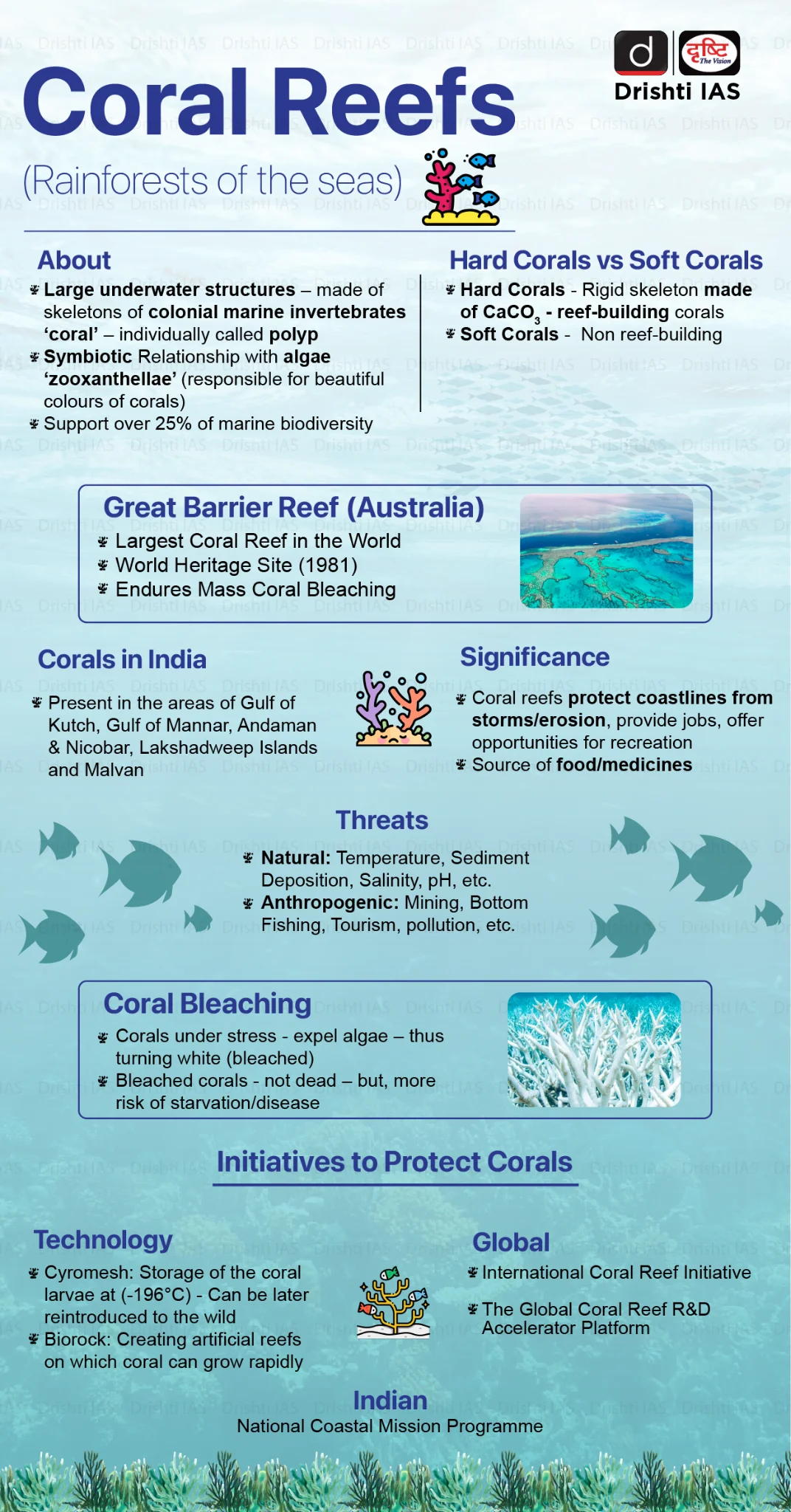

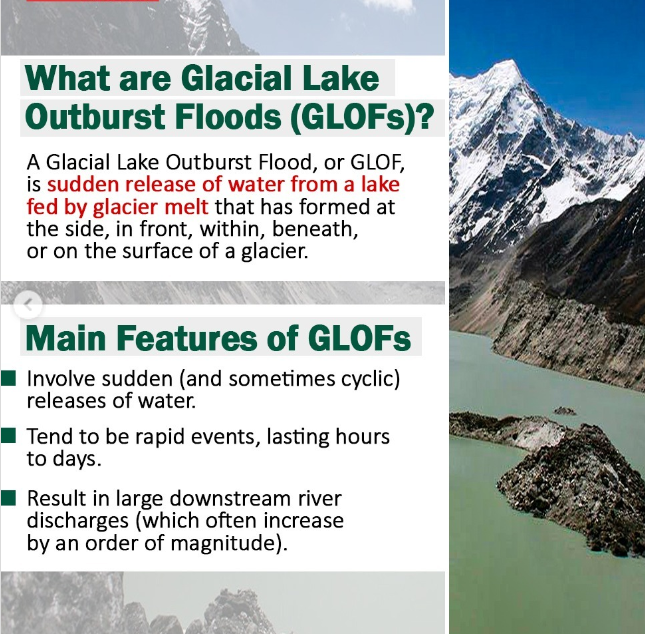
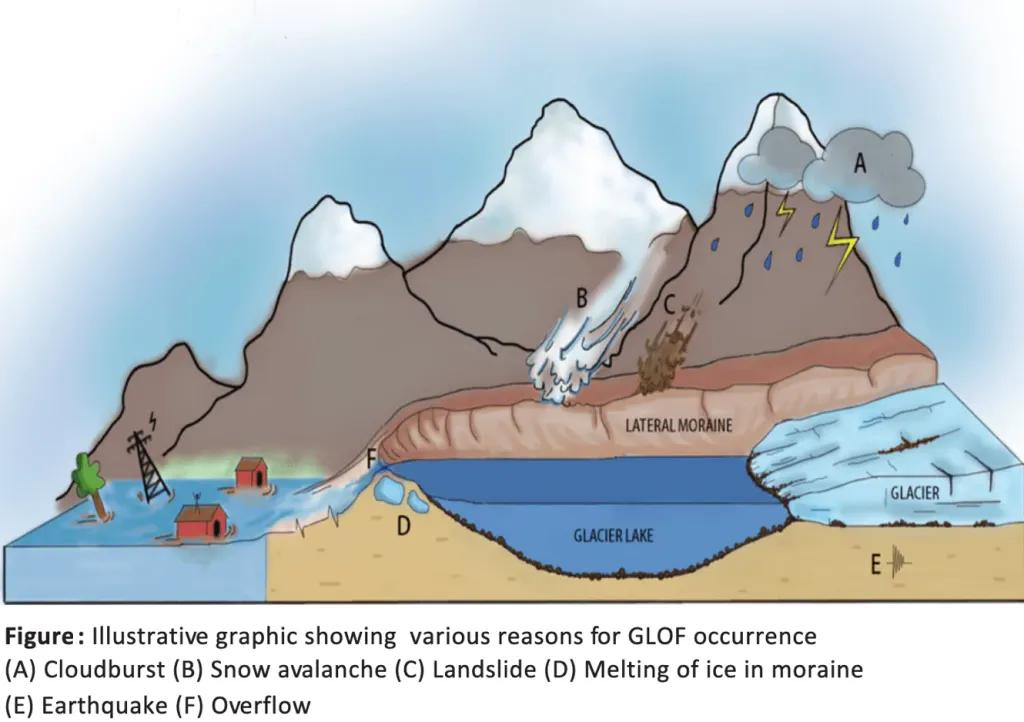
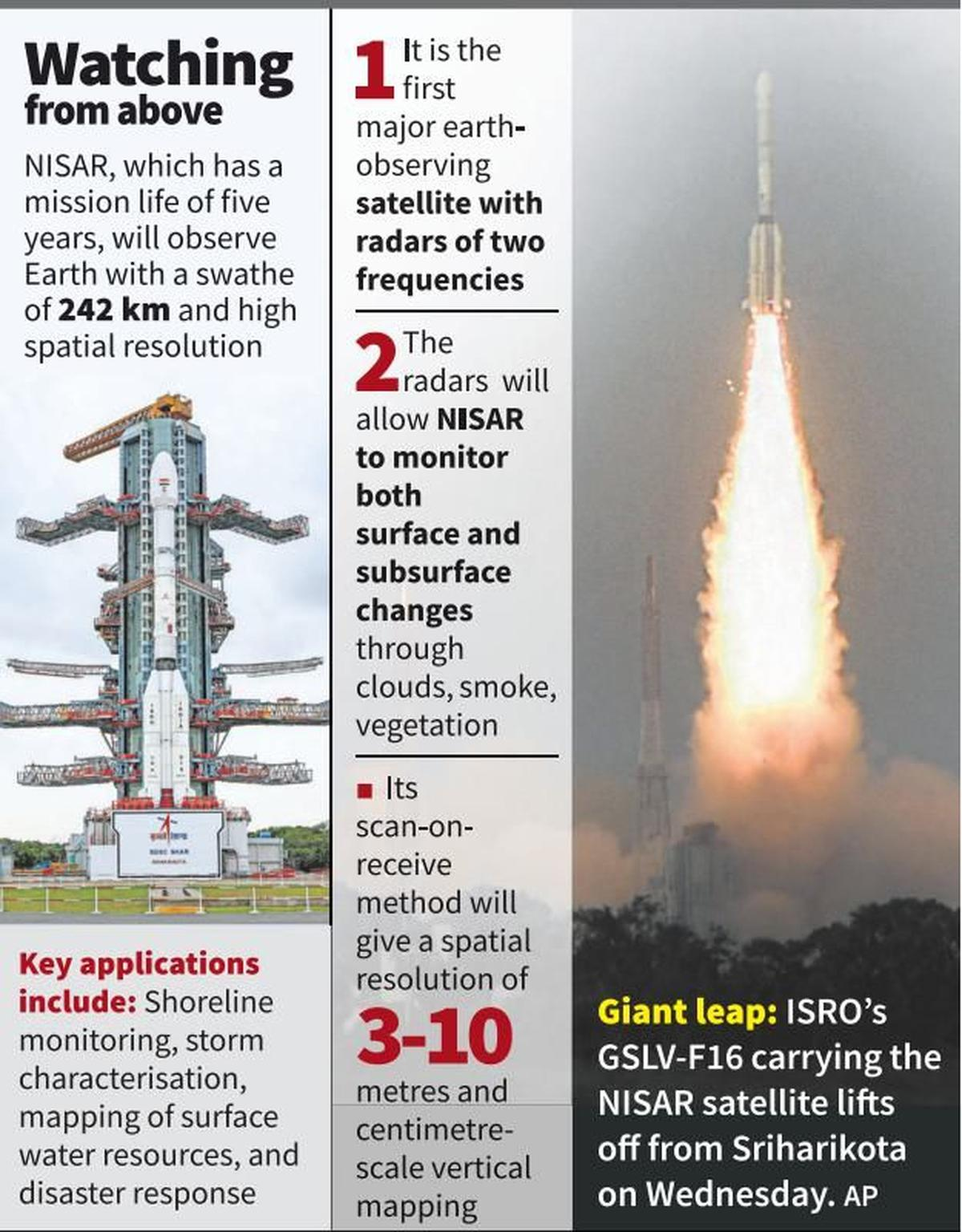
.png)
